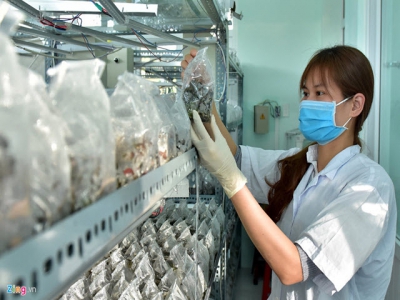What can businesses harvest after sowing capital in agriculture?

Many large corporations in different business fields have rushed to pour capital into agriculture to seek a new driving force for their growth. But not all of them have been successful.
Large corporations rush to invest in agriculture
Some years ago, Hoang Anh Gia Lai Group, established as a real estate developer, announced investment in agriculture production, stirring up the business community. Many businesses followed the move.
Gemadept, a shipping firm, for example, stated it will pour money into agriculture projects.
In 2012, Gemadept issued an optimistic report about its rubber growing project in Cambodia. In 2013, Gemadept got a land-use right certificate for 70 years for 30,000 hectares of land. At least 8,000 hectares of rubber had been planted by that time.
However, the company later had to give up the project as it could not bring profits. Because of the failure of project, Gemadept was called a ‘naïve investor’.
Many large corporations in different business fields have rushed to pour capital into agriculture to seek a new driving force for their growth. But not all of them have been successful.
Even Hung Vuong JSC, a large company in the agriculture sector, has also been bogged down in its investment plans.
Unlike Hoang Anh Gia Lai and Gemadept, which developed projects from the very beginning, Hung Vuong took a short cut to create a ‘seafood empire’ through M&A.
The M&As allowed the enterprise enlarge its operation scale. However, its profit has been shrinking and the debts have exceeded stockholder equity. Most recently, Hung Vuong had to transfer its subsidiary – Viet Thang, an animal feed company – to Vingroup.
Duc Long Gia Lai Group also decided to inject capital into agriculture as it was encouraged by Hoang Anh Gia Lai’s huge investments. The first project in the field was a large-scale cow breeding farm in the Central Highlands.
In 2014, Duc Long Gia Lai reported revenue of VND60 billion and profit of VND42 billion from corn farming. It announced a plan to invest in a project on breeding 120,000 cows for milk and meat, capitalized at VND11 trillion. The project was expected to kick off in the first quarter of 2015, but to date, the cows have not arrived yet.
Despite many failures, investors are still pouring money into agriculture projects or agriculture service companies.
Just within three years, T&T spent VND4 trillion to invest in Quanh Ninh Port and agriculture companies such as Vegetexco, Vigecam and Vinafor.
Analysts have questioned T&T’s real purpose when buying the companies, which all have large land plots on advantageous positions. Vinafood II has land plots in HCMC, Can Tho, Long An and Ben Tre with total area of 3,405,950 square meters.
Related news
 New decree removes barriers for rice exporters
New decree removes barriers for rice exporters According to a new governmental decree, rice-exporting businesses will no longer be required to own rice storage, paddy milling and grinding facilities
 Hanoi seeks increased supply of safe farm produce from other provinces
Hanoi seeks increased supply of safe farm produce from other provinces Implementing a joint program to develop a safe vegetable supply chain for the city, Hanoi has developed plans for agricultural trade promotion
 Cross-breeding, piloting many new varieties of plants and animals
Cross-breeding, piloting many new varieties of plants and animals Determining agriculture as an important production sector that contributes to local socio-economic development, in recent years